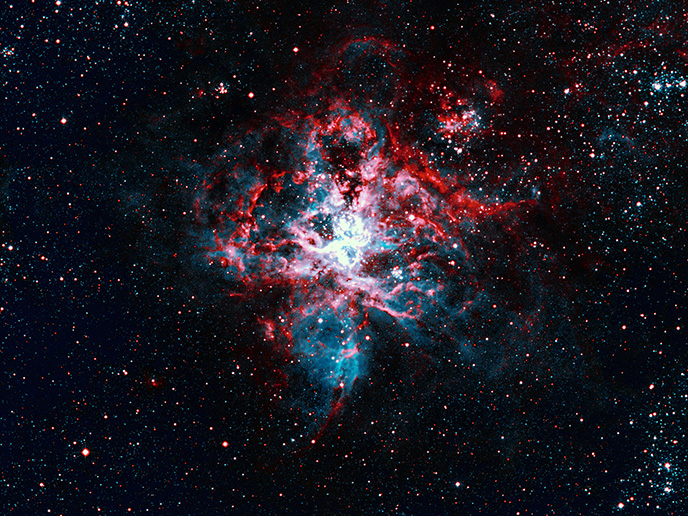Boosting our ability to scan exoplanet atmospheres
Exoplanets are found outside our solar system. One method scientists use to investigate these distant planets – such as gaseous giants – is to measure the composition of their atmosphere. Atmospheric composition can reveal many fundamental properties of exoplanets, including their formation mechanism and internal structure. Yet while state-of-the-art exoplanet imagers have been developed, they have very low spectral resolution(opens in new window), which limits their potential to deliver highly detailed atmospheric information. “Low spectral resolution data are enough to reveal the temperature and gravity of these objects, and the presence of large absorption bands informs us about the dominant molecules,” explains Arthur Vigan, researcher in astrophysics and instrumentation at the Marseille Astrophysics Laboratory(opens in new window) in France and HiRISE(opens in new window) project coordinator. “However, it’s impossible to measure very specific quantities such as the carbon-to-oxygen ratio, which can tell us how and where the planet formed in the disk of gas and dust surrounding the primordial star,” adds Vigan. “Other quantities that cannot be measured are the orbital velocity of the planets and their rotation rate, which are also of particular interest to understand these objects and their planetary systems,” he says. In the HiRISE project, which was funded by the European Research Council(opens in new window), Vigan and colleagues designed a new ‘demonstrator’ instrument that combines the abilities of two existing facility instruments installed on the ESO Very Large Telescope (VLT)(opens in new window) in Chile. With higher spectral resolution, this demonstrator should help scientists better understand the formation, composition and evolution of young exoplanets.
Combining advanced tools to gather exoplanet signals
The demonstrator, HiRISE, combines the exoplanet imager SPHERE(opens in new window) with the high-resolution spectrograph CRIRES(opens in new window), using optical fibres that transmit the signal of a known planet from the imager to the spectrograph. “This is novel in the sense that before HiRISE – and its American equivalent KPIC – nobody really imagined doing high-resolution spectroscopy directly on these planetary companions,” notes Vigan. To develop the demonstrator, the team started from end-to-end simulations to evaluate feasibility, while also developing an optomechanical part for the instrument. “The difficulty was that our instrument needed new modules in the SPHERE and CRIRES instruments, and we had to also route 80 metres of fibre around the telescope,” says Vigan. Once satisfied with the design, the team assembled and tested it in the lab in Marseille. It was installed at the VLT in June 2023, with the first on-sky tests following in the same month.
A successful foreign instrument
“The project can be considered a major success,” remarks Vigan. “Successfully installing a novel instrument such as HiRISE on the VLT with the limited resources that we had is a significant achievement.” HiRISE is the first visitor instrument on the VLT in the past 15 years. It will remain there at least until 2027.
Aiding our understanding of the atmosphere of new exoplanets
The on-sky tests demonstrated excellent performance, and the team have now entered a new phase of scientific exploitation. In November 2023, the HiRISE team started a new survey to study exoplanets’ composition and orbits, and to search for exomoons. “We have already observed five exoplanets, and exciting findings are already on their way,” says Vigan. “We have additional nights planned in 2024. Hopefully a lot of results will come in the next few years.”







